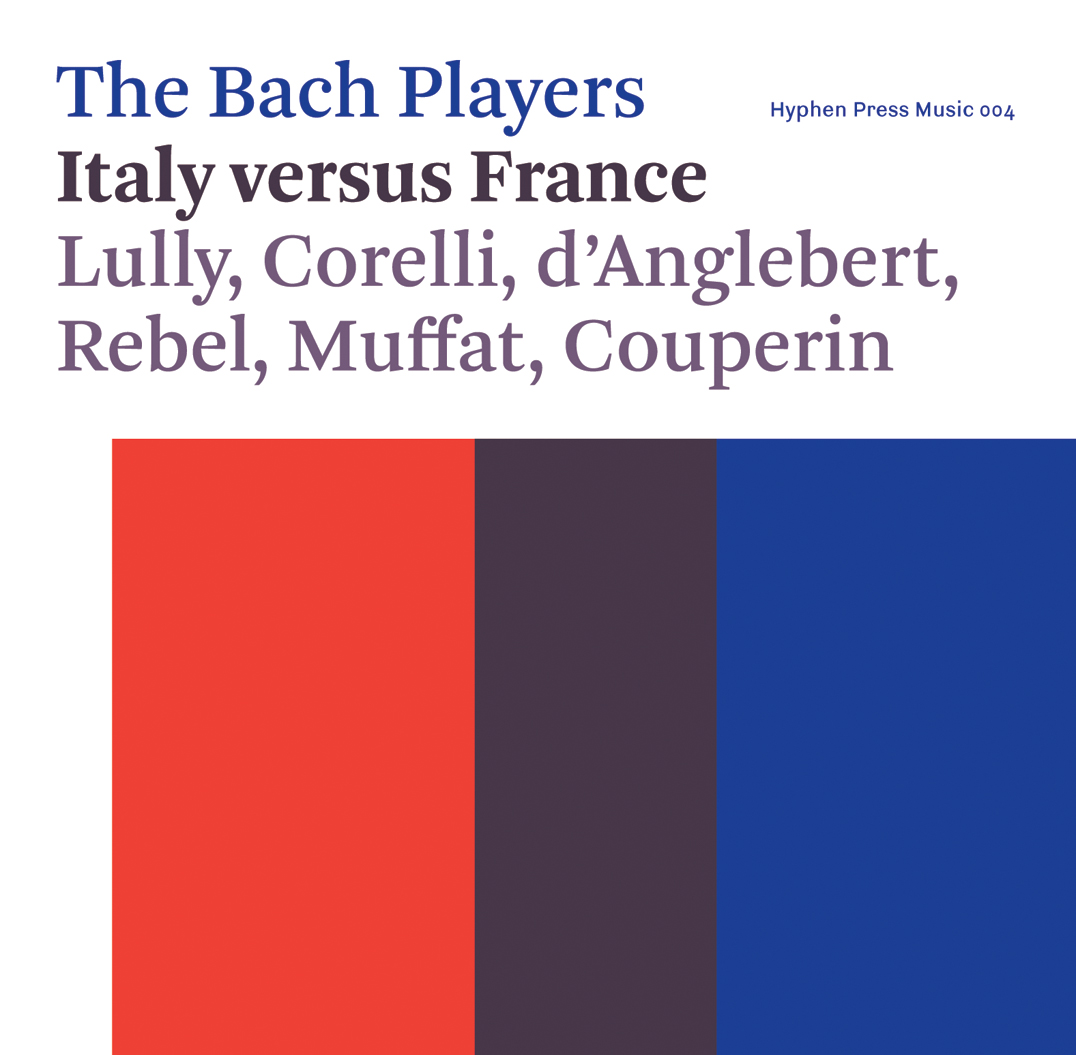[HPM 004]
Italian or French? Jean Baptiste Lully and Arcangelo Corelli were the champions of these two musical styles – and the main subjects of the many attempts to establish which style was better. Or could the two styles be united? This programme paints a musical picture of the later seventeenth and early eighteenth centuries in Europe, through the music of Corelli, Lully, and their contemporaries. Chief among the reconcilers was the organist and composer Georg Muffat. German but of Scottish ancestry, it was he who introduced both styles to Germany. Also included are Rebel’s homage to Lully and Couperin’s to Corelli. In this vivid recording The Bach Players bring history to life.
The music
Jean-Baptiste Lully (1632–87): Ouverture and chaconne from Le bourgeois gentilhomme
Jean Henry d’Anglebert (1629–91): Tombeau de M. de Chambonniîres
Jean-Fery Rebel (166–1747): Tombeau de M. de Lully
Robert de Visée (c.1655 – c.1733): Prélude and musette
Georg Muffat (1653–1704): ‘Blanditiae’ from Florilegium secundum in E minor
Arcangelo Corelli (1653–1713): Trio sonata, op. 2, no. 12
François Couperin (1668–1733): Apothéose de Corelli: Grande sonade en trio
Bernardo Pasquini (1637–1710): Toccata in A minor
Georg Muffat, Armonico tributo: sonata II in G minor
The musicians
The Bach Players:
Nicolette Moonen violin / narration, & director
Rachel Isserlis violin / violetta
Foskien Kooistra viola
Rachel Stott tenor viola
Kinga Gáborjáni basse de violon / viola da gamba
Silas Wollston harpsichord
Jakob Lindberg theorbo
Recording & production
Produced by The Bach Players with Adrian Hunter, and sound-engineered by him
Recorded at St Michael’s Church, Highgate, London, 20 to 22 July 2010
Presentation
A 20-page accompanying booklet includes an essay on the music by the composer Hugh Wood, given also in French translation. The booklet and CD packet are illustrated by photographs of the musicians at the recording sessions.
Reviews
Les pièces choisies, aux effectifs chambristes, demeurent intimistes et les musiciens ont choisi de mettre l’accent sur les entrelacs mélodiques et une douceur sensuelle et caressante, due au timbre velouté quoique grainé des cordes et à des articulations tendres et fluides. Il se dégage donc de l’intégralité du disque une atmosphère de boudoir élégant, sans superficialité, nimbé d’une extrême délicatesse, d’une fragilité heureuse. Ainsi, l’Ouverture du Bourgeois évite sciemment toute pompe majestueuse et trouve presque des accents dansants, tandis que le spleen désespéré des Tombeaux de M. Chambonnière ou de M. de Lully penchent plus vers la sérénité que vers la noire déploration. De même, la musette de Robert de Visée n’insiste pas sur le caractère champêtre ou rustique de la danse, et adopte un ton résolument curial et raffiné, qu’on retrouve tout au long de la Sonate de Couperin, ample et équilibrée.
Sébastien Holzbauer, Muse Baroque
This is the most enjoyable programme of seventeenth-century chamber music I have heard in a long time. The recording manages to capture the strings in gutty rather than silvery detail so we relax and enjoy the music without suffereing from steel-string fatigue. Altogether, this is a wonderfully diplomatic programme which brings the best out in everyone – French, Italian, German and performers alike.
Simon Heighes, International Record Review, May 2011
… beautifully judged performances …
Jan Smaczy, CD Review, BBC Radio 3, 14 May 2011
Elements of the two national traditions are nicely juxtaposed on a disc entitled ‘Italy versus France:’, part of an enterprising series in which The Bach Players approach French music from various different perspectives. At one extreme in the present programme is a group of items representing the unalloyed ‘style français’ – the overture and chaconne from Lully’s ‘Le Bourgeois gentilhomm’, together with two theorbo pieces by Robert de Visée and d’Anglebert’s ‘Tombeau de M. Chambonnières’, a tribute to the founder of the French ‘clavecin’ school. At the other is Corelli’s trio sonata on the ‘ciaccona’, op. 12 no. 12, plus a keyboard toccata by Pasquini and the G minor sonata from Georg Muffat’s homage to Corelli, ‘Armonico tributo’. Between these are two further works in that archetypal French genre, the ‘tombeau’, which nevertheless adopt the medium of the Italian trio sonata: Jean-Féry Rebel’s ‘Tombeau de M. de Lully’ and Couperin’s ‘Le Parnasse, ou L’Apothéose de Corelli’. This imaginative programming creates an anthology which amounts to far more than the sum of its parts. All the music is first rate, and The Bach Players, directed by Nicolette Moonen, do it full justice, whether in Muffat’s sublime contrapuntal edifices, or in the dignified but poignant ‘tombeaux’ by d’Anglebert and Rebel, or in Couperin’s evocation of Corelli’s ‘enthousiasme’. Uplifting and hugely enjoyable.
Graham Sadler, Early Music, May 2015
